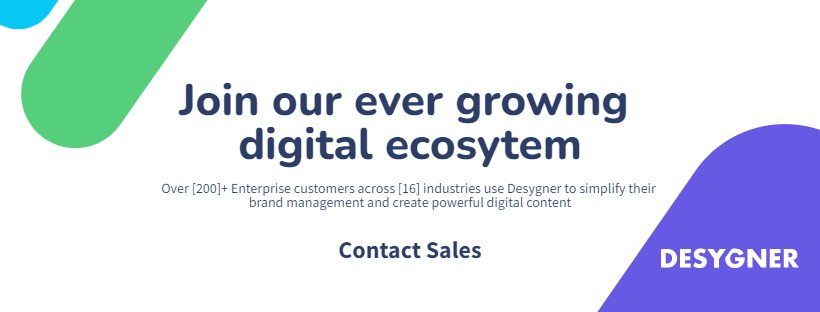The Rise of Marketing Automation: Top 5 Trends for 2022
Marketing is dynamic. And in a world where brands need to remain globally and digitally relevant, marketing must transcend traditional and stereotypical methods.
That’s why marketing automation has come to the forefront in 2022.
Marketing experts predict that by the end of 2023, global marketing automation will reach a 25.1 billion dollar market size. Already, 90% of marketers use about two marketing automation software daily.
The results are mind-blowing. The prospects are enormous, and in a world of a million strategies, marketing automation is a marketing strategy that has come to stay and is growing as rapidly as ever.
This article will address the new trends in the marketing automation industry. We will discuss how businesses keep up with these trends and adjust to these changes to achieve their marketing goals. It will also outline how Artificial intelligence and machine learning are providing solutions to the marketing industries’ challenges and enhancing customer experiences.
Learn how marketing automation works for your business
What is Marketing Automation and Why is It Important
Marketing automation refers to using software to automate routine and repetitive marketing tasks. These software applications help to achieve the seamless experience that makes marketing effective.
You can use them as stand-alone software or integrate them with your CRM, CDP, and other enterprise software. They can also be used collaboratively with human input.
The goal is to turn the complex and monotonous processes involved in marketing into repeatable, consistent, and easier operations.
Marketing automation does not replace human input in organizations. It augments and improves human efforts, freeing employees to focus on other tasks. You can automate marketing tasks, as well as input employee time tracking to increase your team’s productivity.
Marketing automation is essential because it boosts productivity and decreases the errors and shortcomings of human input.
Top 5 Marketing Automation Trends in 2022
2022 is the year of brand awakening. Customer-centric brands are at the forefront of B2B and especially B2C companies. People want seamless service. The stakes are high, and there is an influx of innovations with every waking moment.
Let us explore the trends in marketing automation and why your business should adopt them as part of your marketing strategy.
1. ChatBot Automation
Marketers have seen the dangerous consequences of not paying attention to customers. Allowing them to go through the stress of poor communication is bad for business. Prompt communication, along with the best business phone systems and the right automation tools, means more conversion rates as they can move quickly from each stage of their buyer journey to the other. AI-powered chatbots can make the process easy and fast. Thirty-five percent of customers love chatbots. Building a global customer base would mean responding to customers round the clock, especially as a B2C or SaaS company. Using chatbots improves user experience considerably. Your bot can be an omni channel marketing platform to accommodate customers on various platforms, even social media. The Desygner Enterprise bot doesn’t just aid in a prompt response. It makes sure to respond to customers in a personalized tone and could be set to multilingual to enable the engagement of customers from around the world. Because there is less intervention, it’s easier to avoid human errors and track information for analysis and more user-generated content. The result is that the average response time is improved significantly as the chatbot can respond to lots of clients at once.
2. Voice-Activated Automation
Voice-based marketing is ideal for most product-based companies. It’s also really great for other kinds of companies. Voice-based marketing can help with recording, tracking, and managing phone conversations. It can also help with call transcriptions and receiving voice commands. Big brands like Dominos, Uber, and PayPal have launched voice-based marketing features. Voice-activated automation enables brands to have two-way conversations with their customers and avoid the monotony of one-way voice recordings. Voice automated chatbots remove the technical bridge in the information that comes with text conversations.
3. Digital Marketing Content Automation
Content marketing is a vital part of any digital brand to thrive. Content marketing is consistent, cohesive content strategy and content curation. This is made quite easy using a digital marketing content automation tool. In 2022, marketers will be using these content automation tools to achieve excellent results in their content marketing. The algorithm of most social media platforms supports constant engagement and content posting. Desygner’s digital marketing content automation tool can enable marketers to create and repurpose content. It even allows them to use the algorithm tools that would help them reach their target audience.
4. Hyper-Personalisation Automation
Things have evolved from the bare minimum personalization to the need for hyper-personalization. Customers do not just want their names tagged in every paragraph of an AI-written email. They want more. They don’t want generic, rigid messages and content. They want the kinds of things that resonate with them. They want you to sound human. People are not just buying a product or using a service.
Customers want a feeling of acceptance, love, and support. Hyper personalization helps you achieve that. And marketing without this personalization would not work in 2022 with the excessive competition in every industry. This automation could be done using an SMS marketing service for two-way conversational chats or personalized product tours. It may even include voice features for customers to express themselves better.
5. No-Code Adaptations
The complexity of many marketing tools has greatly hindered productivity and led to several frustrating stops. No-code automation is getting more popular because of the need to accommodate team members who may not be tech-savvy. No-code tools save money, time, and effort. Websites can be quickly built, content can be adequately managed, and data can be better analyzed using no-code tools. No-code is a revolution that has started happening. Technical knowledge can no longer stand as a hindrance to marketing operations. No-code apps and software can enable marketers to create customized and beautiful landing pages. They can also post their blogs themselves and track their data.
6. Collaboration Automation Tools
Remote working has taken over the world, especially after the pandemic and the aftermath of the great resignation in 2021. New collaboration methods have become top-notch in marketing automation. Marketing Teams now seek means for effective collaboration with teammates. The impact of good teamwork on the business’ productivity cannot be overemphasized.
Marketing automation tools would help in content marketing, advertising, analytics, and customer support.
Wrapping Up
Marketing automation is evolving. Marketing Teams would always have to update and keep up with the trends. This would make for effective, sustainable marketing.
Creating a marketing automation strategy will help put all these trends in place. Also, using the right automation tools will ensure effective marketing automation. The Desygner digital marketing content and bot are the best tools to achieve your marketing automation goals.








